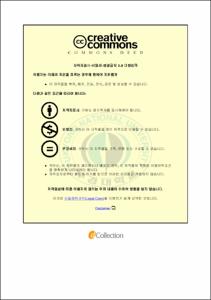SWMM과 FLUMEN을 연계한 수영·망미 저지대의 침수분석
- Alternative Title
- Inundation analysis for Suyeong-Mangmi lowland area using SWMM linked with FLUMEN
- Abstract
- The recent rainfall patten in Korea shows the total amount of rainfall has increased and the total number of heavy rain day has increased. Therefore, the damage resulted from flood disaster has been dramatically increased. The purpose of this research is flooding analysis in an urban area using SWMM (Storm Water Management Model) liked with FLUMEN (FLUvial Model Engine). The study area is Suyeong-Mangmi lowland area, Busan, Korea. Suyeong-Mangmi lowland area has been flooding hazard zone since 1995. The last flooding cases of this area occurred on July 7th and 16th, 2009, and those flooding cases were analyzed in this study. The first step of computation is calculating flooding hydrographs from storm sewers using the urban runoff simulation model of SWMM. The flooding hydrographs are used in the inundation analysis model of FLUMEN. The results of inundation analysis were compared with the real flooding situation of the study area. The real maximum inundation depth was guessed by 0.5 m or more on July 16th. The computation yields the maximum inundation depth of 1.8 m and the result was overestimated. the errors may be resulted from the runoff simulation and incapability of simulation using FLUMEN for flow into buildings. The models and procedures used in this study can be applied to analysis of flooding resulted from serve rainfall and insufficiency of drainage capacity.
- Issued Date
- 2010
- Awarded Date
- 2010. 2
- Type
- Dissertation
- Publisher
- 부경대학교
- Alternative Author(s)
- Jung, Tae hun
- Affiliation
- 부경대학교 대학원
- Department
- 대학원 토목공학과
- Advisor
- 이상호
- Table Of Contents
- 목 차
표 목차 vii
그림 목차 viii
Abstract xi
1. 서론 1
1.1 연구 배경 및 목적 1
1.2 연구 동향 2
1.3 연구 내용 및 방법 3
2. 연구에 적용한 모형의 개요 및 이론 4
2.1 도시 유출 모형의 선택 4
2.2 Storm Water Management Model 5
2.2.1 SWMM의 개요 및 개발 현황 5
2.2.2 SWMM의 구조 8
2.3 SWMM의 이론 11
2.3.1 소유역의 특성인자 11
2.3.2 침투 및 증발산 14
2.3.3 RUNOFF 블록의 기본이론 17
2.3.4 TRANSPORT 블록의 기본이론 19
2.3.5 EXTRAN 블록의 개요 22
2.3.6 EXTRAN 블록의 이론: 수송 시스템 25
2.3.7 EXTRAN 블록의 이론: 부정류 흐름의 지배방정식 26
2.4 침수 해석 모형 28
2.5 FLUvial Modeling ENgine 29
2.5.1 FLUMEN 모형의 소개 29
2.5.2 지배방정식 29
2.5.3 마찰계수 31
2.5.4 초기조건 및 경계조건 31
2.5.5 유한체적법을 이용한 수치해석 33
3. 홍수유출 모형의 적용 35
3.1 대상지역의 선정 35
3.2 소유역 특성인자 추출 및 하도망 구성 36
3.3 모의 대상 강우 46
3.4 모형의 수행 47
4. 침수분석 모형의 적용 51
4.1 대상지역의 선정 51
4.2 침수분석 모형의 구축 52
4.2.1 지형자료 구축 52
4.2.2 경계조건 및 초기조건 58
4.3 모형의 수행 58
4.4 모의 기간의 실제 침수 상황 85
5. 결론 및 향후 과제 88
6. 참고문헌 90
- Degree
- Master
- Files in This Item:
-
-
Download
 SWMM과 FLUMEN을 연계한 수영·망미 저지대의 침수분석.pdf
기타 데이터 / 3.43 MB / Adobe PDF
SWMM과 FLUMEN을 연계한 수영·망미 저지대의 침수분석.pdf
기타 데이터 / 3.43 MB / Adobe PDF
-
Items in Repository are protected by copyright, with all rights reserved, unless otherwise indicated.